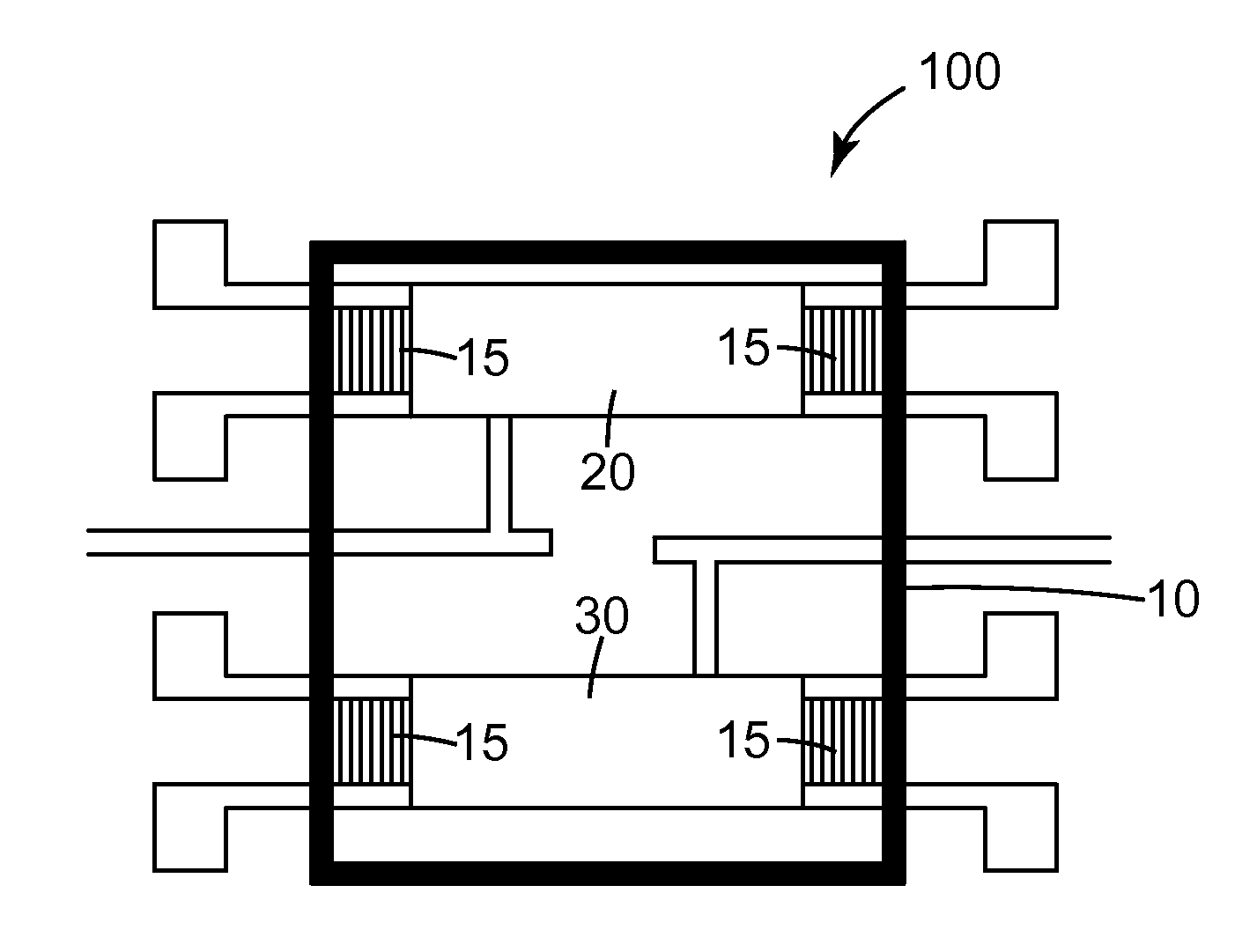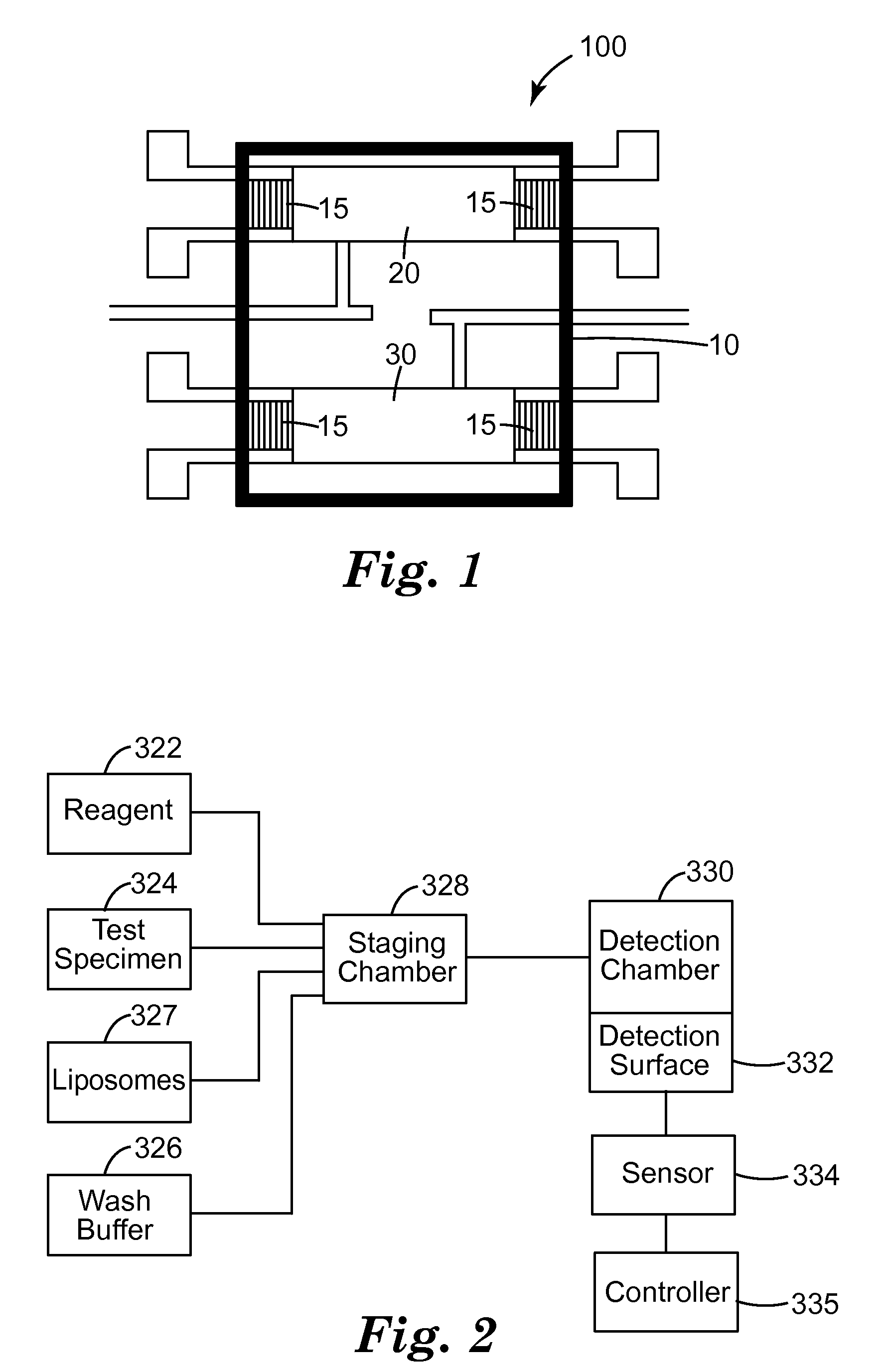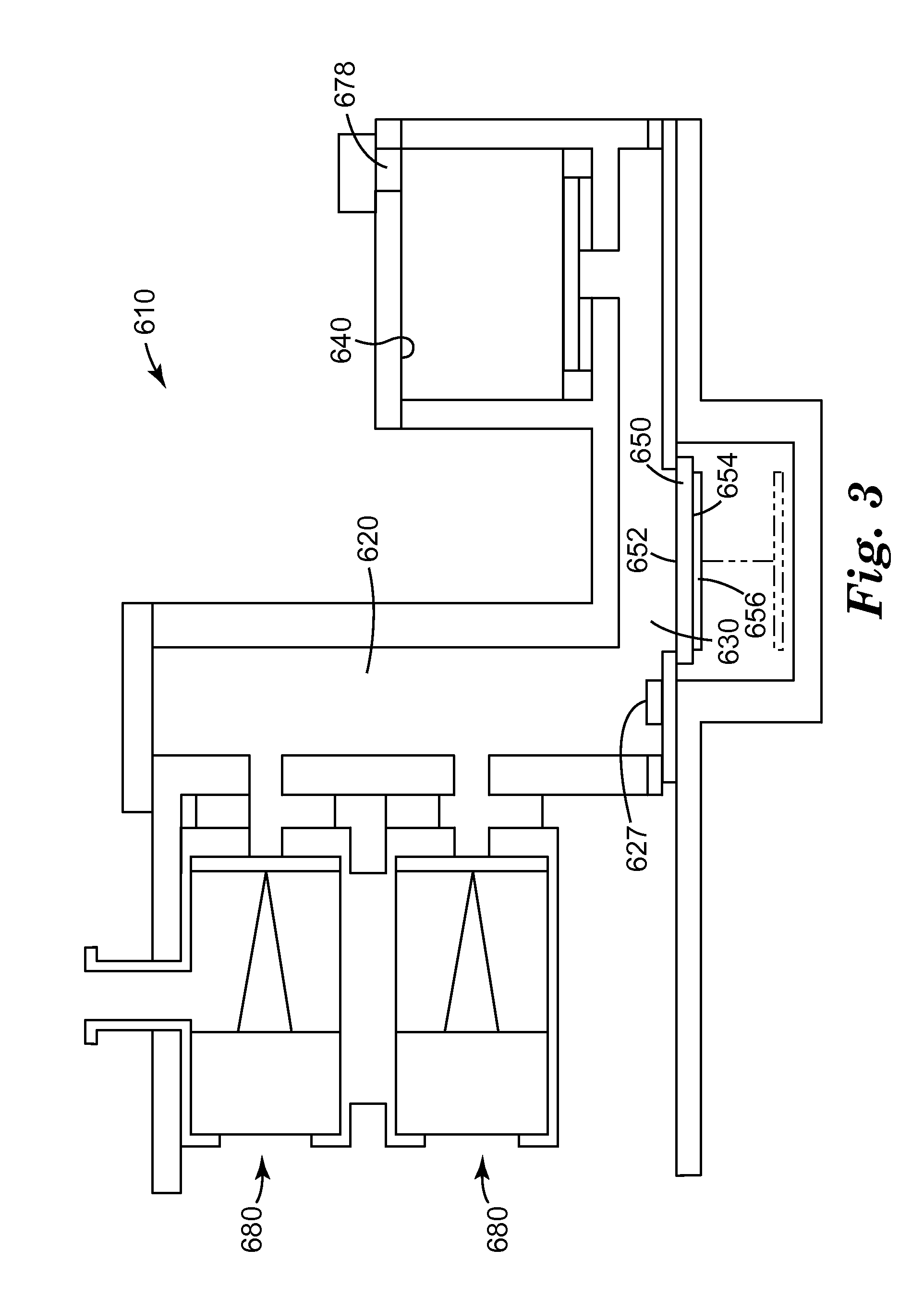Method of detection of bioanalytes by acousto-mechanical detection systems comprising the addition of liposomes
a detection system and liposome technology, applied in the field of acoustomechanical sensors, can solve the problems of liquid carrier reducing the sensitivity of the acoustomechanical detection system, sensors experiencing limitations in detection, and raising issues, so as to enhance the detection of target biological analytes
- Summary
- Abstract
- Description
- Claims
- Application Information
AI Technical Summary
Benefits of technology
Problems solved by technology
Method used
Image
Examples
example 1
Preparation of Surface Acoustic Wave Sensors
[0107]Delay line shear-horizontal surface acoustic wave (SH-SAW) sensors could be obtained from Com Dev (Cambridge, Ontario, Canada). The sensors could be coated with a 50:50 (methyl methacrylate / isobornyl methacrylate) copolymer waveguide, such as the one described in Example W1 of PCT Publication No. WO2005 / 066092 titled “Acoustic Sensors and Methods”, filed on Dec. 17, 2004. The waveguide-coated sensors could be subsequently coated with a terpolymer immobilization chemistry consisting of isobornyl methacrylate, methyl methacrylate and hydroxyethyl methacrylate glutaroylsaccharin, such as the one described in Example MP26 of PCT Publication No. WO2005 / 066092 titled “Acoustic Sensors and Methods”, filed on Dec. 17, 2004.
[0108]Biotin-amine could be immobilized onto the active channel of the sensor using chemistries and hand-coating or sprayjet-coating processes known in the art. A non-specific Chicken IgY could be obtained from, for exampl...
example 2
Surface Acoustic Wave Experimental Parameters and Data Collection
[0110]A syringe pump could be used to flow Phosphate-buffered Saline (PBS), pH 7.4, buffer over the sensor at a desired flow rate. After sufficient stabilization of the buffer flow, the sample could be injected into the device and allowed to flow over the sensor surface. The operating frequency of the sensor devices could be 103 MHz. Phase and attenuation signals could be collected until the experiment is complete.
[0111]A time gating algorithm, such as the one described in the 8753ET / ES Network Analyzers User's Guide (Agilent Technologies, pp 3-35 to 3-36), could be used to process the raw phase and attenuation data. The time interval unit for data collection could be set between 8-15 seconds. The raw data could be collected and time gating could be done using a software program written in, for example, Matlab (The Mathworks, Natick, Mass.). The time gated data could be analyzed to calculate shifts in phase and attenua...
example 3
Liposome Preparation
[0112]Approximately 50 mL of a 20 mg / mL solution of DPPC (1,2-dipalmitoyl-sn-glycero-3-phosphocholine, Avanti Polar Lipids, Alabaster, Ala.) in chloroform could be reduced to dryness and could be subsequently mixed with 2 mL of a 50 mg / mL solution of 16:0 Biotinyl-Cap-PE (1,2-dipalmitoyl-sn-glycero-3-phosphoethanolamine-N-(Cap-biotinyl), sodium salt, Avanti Polar Lipids, Alabaster, Ala.) in chloroform. The resulting mixture could be made up to 10 mL with chloroform. This solution would contain approximately 110 mg / mL lipid mixture (˜11% biotinylated). A portion (4.4 mL) of this lipid mixture could be reduced to dryness on a rotary evaporator. The solid residue could be hydrated with 20 mL of a 0.1M solution of dibenzoylcystine (DBC, sodium salt) in water, and then sonicated in a Branson 3510 ultrasonic water bath for 1 hour at 45° C. This mixture could be left standing for three days at room temperature.
[0113]The aforementioned solution (20 mL) could be mixed wit...
PUM
| Property | Measurement | Unit |
|---|---|---|
| diameter | aaaaa | aaaaa |
| pH | aaaaa | aaaaa |
| operating frequency | aaaaa | aaaaa |
Abstract
Description
Claims
Application Information
 Login to View More
Login to View More - R&D
- Intellectual Property
- Life Sciences
- Materials
- Tech Scout
- Unparalleled Data Quality
- Higher Quality Content
- 60% Fewer Hallucinations
Browse by: Latest US Patents, China's latest patents, Technical Efficacy Thesaurus, Application Domain, Technology Topic, Popular Technical Reports.
© 2025 PatSnap. All rights reserved.Legal|Privacy policy|Modern Slavery Act Transparency Statement|Sitemap|About US| Contact US: help@patsnap.com



